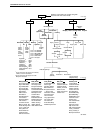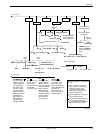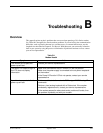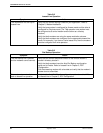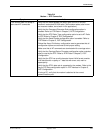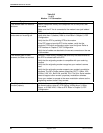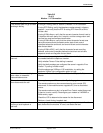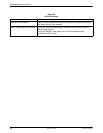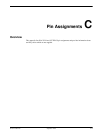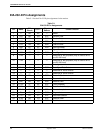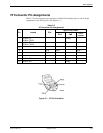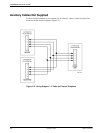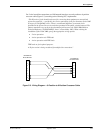
COMSPHERE 3900 Series Modems
B-4 September 1998 3910-A2-GN32-40
Table B-5
(1 of 2)
Modem — VF Connection
Symptom
Action
The modem does not receive a
dial tone.
Attach a telephone directly to the telephone line to verify that a dial
tone exists.
Make sure the VF line is connected to the modem’s rear jack labeled
DIAL.
The modem does not go off-hook
and answer an incoming call.
Verify that the Auto Answer Ring Count configuration option is set to a
value other than 0 (disable). Refer to Line Dialer in Chapter 5, DCP
Configuration.
Verify that the DTE is providing DTR to the modem.
If the DTE does not provide DTR to the modem, verify that the
modem’s DTR Action configuration option is set for Ignore. Refer to
DTE Interface in Chapter 5, DCP Configuration.
Verify that all cables are attached to the correct connectors on the rear
of the modem.
The modem goes off-hook,
answers, but does not connect.
Perform a Local Analog Loopback test and verify that data entered at
the DTE is echoed back to the DTE.
Verify that the originating modem is compatible with your receiving
modem.
Verify that the originating modem recognizes your modem’s answer
tone.
Verify that the originating modem supports your modem’s modulation
schemes. The 391x Series modem recognizes CCITT V.32bis, V.32,
V.22bis, V.22, V.21, Bell 212A, and Bell 103J. The 391x Series modem
does not support other vendors’ proprietary modulation schemes.
Force your modem to operate at the same modulation scheme as the
originating modem to see if they connect.
The Originate Mode does not
function properly.
Verify that the modem’s DTE Dialer Type configuration option is set to
the correct setting: either AT, DTR Dialing, V.25bis Async, V.25bis
Bisync, or V.25bis HDLC. Refer to DTE Dialer in Chapter 5, DCP
Configuration.





